Click Here to View This Page on Production Frontend
Click Here to Export Node Content
Click Here to View Printer-Friendly Version (Raw Backend)
Note: front-end display has links to styled print versions.
Content Node ID: 414309
From green executive airliners to legacy turboprops, completion and refurbishment activity is strong and demand is ascending, according to a spectrum of industry bellwethers. They report customers’ top priorities today are for personalization and technology, and new platforms, connectivity systems, and customization tools provide as much accommodation as customers can afford—pending certifications, of course. A review of current developments and projects showcases some of the expanding capabilities and choices, and how they’re being deployed in cabins and interiors.
Narrowbodies
Narrowbody activity dominates the current executive aircraft market, and recent ACJ319neo deliveries from Jet Aviation illustrate each side of the personalization and technology trends. One redelivered in May features a hand-crafted, art-deco-inspired cabin, designed in collaboration with interior architect Colin Radcliffe. Dark woods, open-pore walnut veneer, a massive bulkhead-mounted “sunburst” marquetry, and custom-dyed ombre carpet highlight the interior’s monochrome palette.
On the tech side, an ACJ319neo delivered in October features the Basel-based company’s quietest and lightest cabin interior to date, the weight reduced in part via the center’s first installation of flexible organic light-emitting diode (OLED) screens in a VVIP interior. The three 55-inch OLED screens, following the ceiling’s curves, are lighter and use less space than conventional displays.
One of the pair of narrowbodies in Lufthansa Technik’s (LHT’s) completion facility at its Hamburg headquarters, an ACJ320neo, is being outfitted with LHT’s first antenna for connectivity with Starlink, the low-earth-orbit (LEO) satellite network, promising 10 times higher speed than current onboard Ka-band connectivity. The system will set the new standard for completions and refurbishment projects, Wieland Timm, LHT’s head of sales for VIP and special aircraft services, said. First-time buyers, he added, are skewing younger, between 35 and 45 years old, and are “interested in [having] the gimmicks available, from IFE, gaming, or whatever is currently in their villas or on their boats, integrated into the aircraft.”
AMAC Aerospace may incorporate an in-development wireless charging system and honeycomb carbon-fiber phenolic panels created with JCB Aero, its French composite structures subsidiary, in the green completions of a BBJ Max 8 and ACJ319neo due for induction in the second half of this year. The Basel-headquartered facility has already redelivered this year a BBJ Max 8 and AC320neo.
With the ACJTwoTwenty now launched (see below), Comlux Completion will incorporate innovations developed for the program, such as noise reduction, high-speed satcom, and wireless IFE technologies, into refurbishments on an ACJ319 and ACJ320 slated to arrive at the Indianapolis facility later this year, said group executive chairman and CEO Richard Gaona.
He expects more makeover demand. “You can refurbish a 20-year-old BBJ with [only] 10,000 hours for $10 million, and have a brand new BBJ,” he said. Meanwhile, a green ACJ320neo is in completion now, scheduled for redelivery early next year.
A pair of head-of-state refurbs are underway at Citadel Completions in Lake Charles, Louisiana. A BBJ737 is in for a complete “spacious and opulent” interior upgrade, said senior v-p of operations and general manager Neil Boyle. Highlights include embroidered cream leather seating, a stunning custom lattice screen, decorative metal-bronze plated finishes, and marble surfaces throughout the cabin along with marble flooring in the galley, entry area, and lavatories.
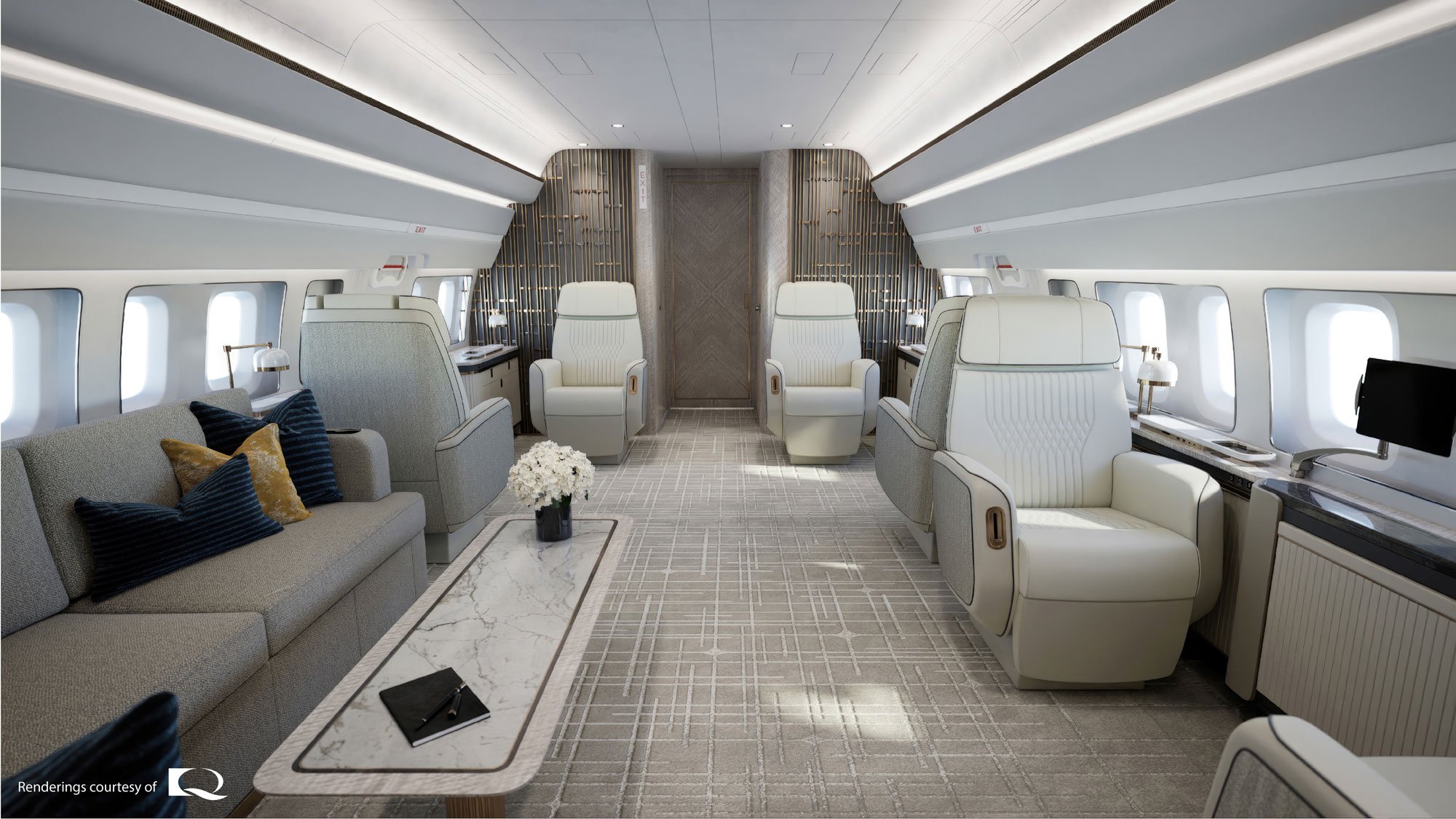
Concurrently, a BBJ 737-7 set for summer redelivery has a wireless IFE system and CMS, including touch switches and panels, and touchscreen monitors, to complement its new, “sleek, modern” interior.

ACJ TwoTwenty
The first ACJ TwoTwenty, the newest member of the Airbus Corporate Jets family, was delivered to launch customer Five, a Dubai-based hospitality firm, in May, and publicly debuted at EBACE. An executive version of the A220-100 regional airliner, the ACJ TwoTwenty interior offers twice the floor space and three times the volume of a large-cabin business jet, yet has the same hangar footprint and about the same price ($78 million to $82 million), interior included. The cabin can be outfitted with a wide choice of certified zone and configuration modules and seating arrangements, mixed and matched in four “signature ambiances.” Airbus Corporate Jets partnered with Comlux Group on the project, with the former’s Sylvain Mariat heading the design team, and Comlux performing the installation and certification at Comlux Completion. Production target is six per year, said Comlux Group’s Gaona.
Costing 40 percent less to operate than a narrowbody exec-liner, LHT introduced at EBACE ACJ TwoTwenty variants for governmental and military operators, positioned as cost-effective alternatives to the large-cabin business jets or narrowbody transports they currently use. A traditional governmental-style cabin design for up to 41 passengers features an executive area with working, conferencing, and sleeping areas forward; and an aft delegation area with a mix of economy class seats. A conventional airliner-style interior layout with a private forward area is also available.
LHT also unveiled MedEvac configurations for the airframe, including a version accommodating up to eight stretchers for transporting lightly and moderately injured or ill patients; and a configuration with two new-generation patient transport units for intensive care patients.
Widebodies
The widebody arena has “witnessed a steady recovery and restored confidence in the VIP completion and refurbishment markets” over the past year, said Chad Thorne, v-p of sales and marketing at Greenpoint Technologies, and the Boeing specialist has capitalized on both. Recent project signings include two head-of-state 787-9s—the Bothell, Washington firm’s seventh and eighth BBJ Dreamliner interior completions—and a BBJ refurbishment.
LHT also has three widebodies under outfitting now and this year was awarded completion of the first ACJ330neo, with redelivery projected for late 2025. Looking ahead, Timm anticipates, “There will be more widebodies [for green completions] than slots available in the market”—perhaps six to 10 green aircraft over the next three to five years, he said. “Nobody can cope with all these aircraft.”
AMAC, with an ACJ350 now in completion, is prepared for the “new challenges, new technology, and new materials” presented by the partially composite Airbus widebody, as well as Boeing’s 787 and 777X, group executive chairman and CEO Kadri Muhiddin said in a recent company update.
Expanding its presence in the sector, Fokker Services Group (FSG) unveiled a new widebody hangar in Hoogerheide, Netherlands. Accommodating aircraft including the A330, A350, 787, and 777, the hangar “will make a crucial contribution to the company’s long-term objective, as market demand for completion services continues to surge,” said FSG CEO Roland van Dijk, and put the Dutch company “in an uncontested position to become the partner of choice for the widebody airframe maintenance and completions and conversions market.”
Comlux recently declined to take on an ACJ330 completion project, an airframe on which the company has already performed one completion, “Not because we don’t have the technology,” Gaona said, but rather in consideration of the company’s bandwidth and focus on the TwoTwenty. “We have made a strategic decision that we are not going to be part of the [widebody completions] market.”
The Airframers
Boeing Business Jets has taken orders this year for a BBJ 737-7, two BBJ 787-8 Dreamliners, and the first option to purchase a BBJ 777-9, the Chicago-based airframer announced at EBACE. Spanning its narrowbody and widebody models, the orders demonstrate the company is “offering the right combination of comfort and performance in our operating economics,” said president Joe Benson.
Range-wise, at 6,600 nm, the 737-7 is the longest-range, single-aisle executive jet, according to Boeing. With a 9,945 nm range, the widebody BBJ 787-8 is distinguished by its all-electric system architecture, a 6,000-foot cabin altitude, cabin humidification system, and smooth ride technology.
The BBJ 777X, expected to enter service in 2025, will be the first business jet capable of connecting any two cities in the world nonstop, with a projected range of 11,025 nm, and with more than 3,000 sq. ft. of floor area, offers the largest interior space of any new civil aircraft in the world. Innovations include an all-new carbon-fiber composite wing, whose outboard sections can fold upward to fit in with current airport infrastructure.
Airbus Corporate Jets booked three orders in the first quarter of 2023—including the first for an ACJ330neo—compared with five total orders for 2022, Benoit Defforge, president of the ACJ, reported at EBACE. “With the TwoTwenty arriving,” he said in reference to the service entry of the newest ACJ model, “I’m sure we’ll achieve much higher figures.”
The company’s previous market for executive jets numbered some 500 total aircraft, said Defforge, but with theACJ TwoTwenty competing against large-cabin business jets, “The targeted market is over 3,000 aircraft. And half of these 3,000 aircraft are today above 10 years old,” he said, underscoring the “potential in this aircraft in years to come.”
The 5,650-nm range of the 16-passenger TwoTwenty is below that of ultra-long-range, purpose-built business jets’, but “enables you to reach over 99 percent of the flights actually done by large-cabin aircraft across the world,” Defforge added.
Meanwhile, the ACJ330neo brings the new engine option (neo) Rolls-Royce Trent 7000 powerplant, new wing, and technologies migrated from the A350, reducing fuel burn by 12 percent versus the previous generation of the popular airframe. Of some 26 ACJ330/340s now in service, 16 are more than 20 years old, Defforge noted, adding, “Now is the right time to start thinking about replacing these old aircraft.”
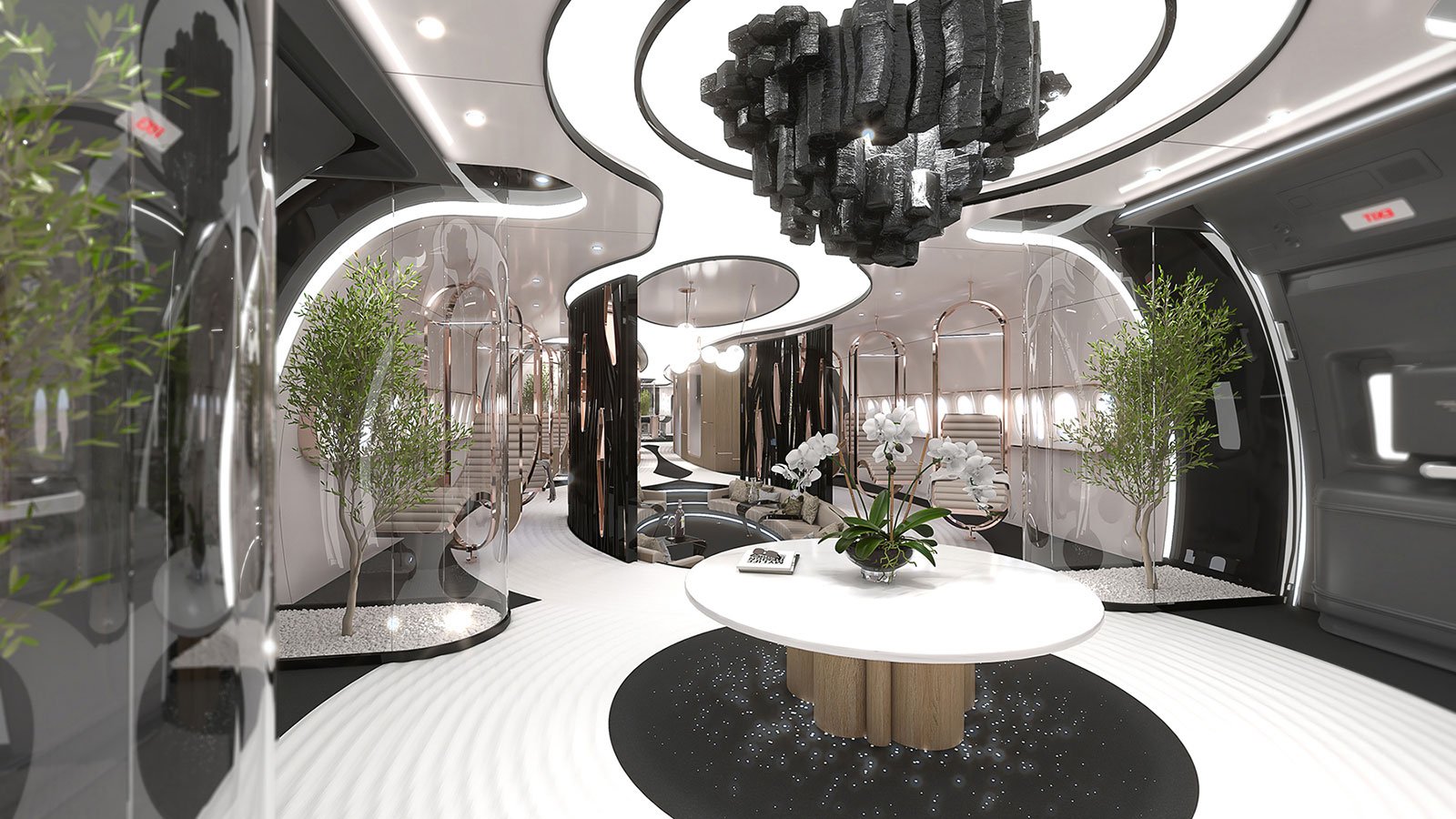
Boeing 777X
With the forthcoming Boeing 777X literally the next big thing in completions, providers are readying plans and designs for their interiors. Greenpoint Technologies unveiled this year its Zen interior concept offering what it calls, “An exclusive retreat for the sophisticated jetsetter seeking a profound connection with nature.” Taking inspiration from Japanese Zen gardens, designers incorporated organic elements including biophilic features and sustainable, natural materials “to cultivate a serene and harmonious environment.” It’s “a modern and technologically advanced aircraft cabin epitomizing tranquility, seamlessly integrating connectivity and bespoke details,” said senior design director Annika Svore Wicklund. Shortlisted for the Private Jet Design Concept Award at this year’s International Yacht & Aviation Awards, Greenpoint showcased the design in a 1/20th scale BBJ 777X model at EBACE.
LHT unveiled at EBACE the initial segment of a 777X VIP cabin concept that incorporates a modern twist on traditional elements of Middle Eastern culture, “meeting the unique needs of our VIP clients in the region,” LHT said. The design features an expandable cocoon-like bedroom and private area at the front of the aircraft, flowing into a spacious office, reception area, and large majlis, or social meeting room. The aft section hosts entourage or delegation seating. It’s the first design developed with native aircraft data provided by Boeing, according to LHT, made available through sister company Lufthansa Airlines, an announced 777X customer, which ensures the concept’s feasibility.
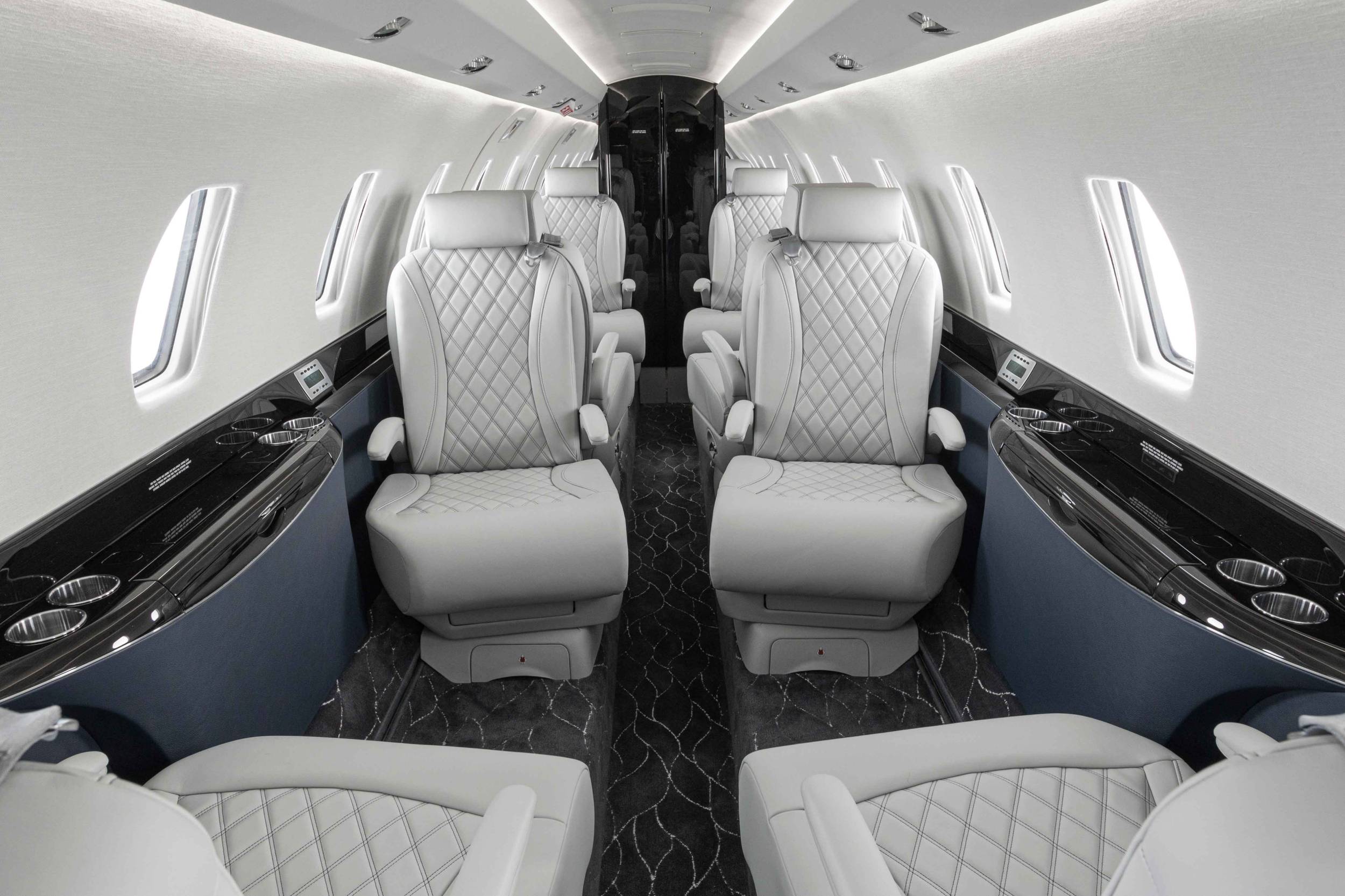
Business Aircraft Refurbishments
Business jet and turboprop refurbishment customers are “completely engaged in the process” and focused on both “trying to maximize” upgrade potential and “personalizing” their aircraft, said Elliott Aviation director of paint and interior sales Meghan Welch. “They’re getting exactly what they want,” she added, echoing comments from a spectrum of aftermarket upgraders.
The Moline, Illinois-based company’s refurbishment clients are incorporating custom design details into the interiors. Galleys are modified to accommodate dining preferences. Personalized glassware sits in custom cup holders. While Part 135 charter operators want branded paint and interiors for their fleets.
A pair of recent refurbishments from Lincoln, Nebraska-based Duncan Aviation repeat that theme. Owners of a Citation 750 “wanted the seats to be the stars” of a complete refurbishment, said project lead designer Heather Pridemore at the company’s Battle Creek, Michigan facility. All the seats were contoured, their profiles accentuated with blue accent stitch lines, created with the company’s new CNC upholstering machine. The cool gray color scheme incorporates black composite ebony veneer and updated satin chrome finish on all plating. The new paint scheme features navy blue, silver, and gold accents.
Meanwhile, the now all-white cabin of a refurbished Bombardier Global Express handed back in May retained only the blue stone inlays in the drink rails of the original interior, and mixes patterned fabrics and sheepskin seats to create texture, depth, and warmth. Performed at its Provo, Utah facility, Duncan’s Molly Pfeiffer collaborated on the design with Olivia Putman at Studio Putman. Putman’s mother, French designer Andrée Putman, designed the interior of the Concorde.
Similarly, VIP Completions in Fort Lauderdale, Florida “collaborated with our long-time client’s personal designer to deliver an exceptional level of customization” on the refurbishment of a Bombardier Global Express delivered early this year, said president Ben Shirazi. The divan features a weave and texture inspired by the classic Chanel bouclé jacket—one of the client’s fashion trademarks—while the bright paint scheme, “also makes a bold statement about the owner’s sophisticated sense of style,” he said.
So do the cabin tech upgrades, which include CMS control via Crestron touch panels, customized Alto MySound audio optimization system, upgraded high-definition monitors, dynamic RGB lighting, and a Plex media server.
At Canada’s Flying Colours, a Challenger 850 refurbishment last year called for an elegant, durable interior with shades of grey, black and white, and a stylish complementary exterior paint scheme. The deceptively simple seat design incorporates a “very complex diamond scheme,” echoed in dado panels and carpeting, said executive v-p Eric Gillespie. The hand-stitched, quilted diamond pattern on the recovered seats creates an impressive 3D-dimension effect.
This fall, the firm will refurbish a Global 6000 during a 240-month inspection and install for the first time Bombardier’s Nuage seats as an aftermarket retrofit. Also on that work order: full soft goods, full re-veneer of all monuments, CMS upgrade, a cabin layout change, and new exterior paint, “to better meet the client’s personal needs,” said Gillespie.
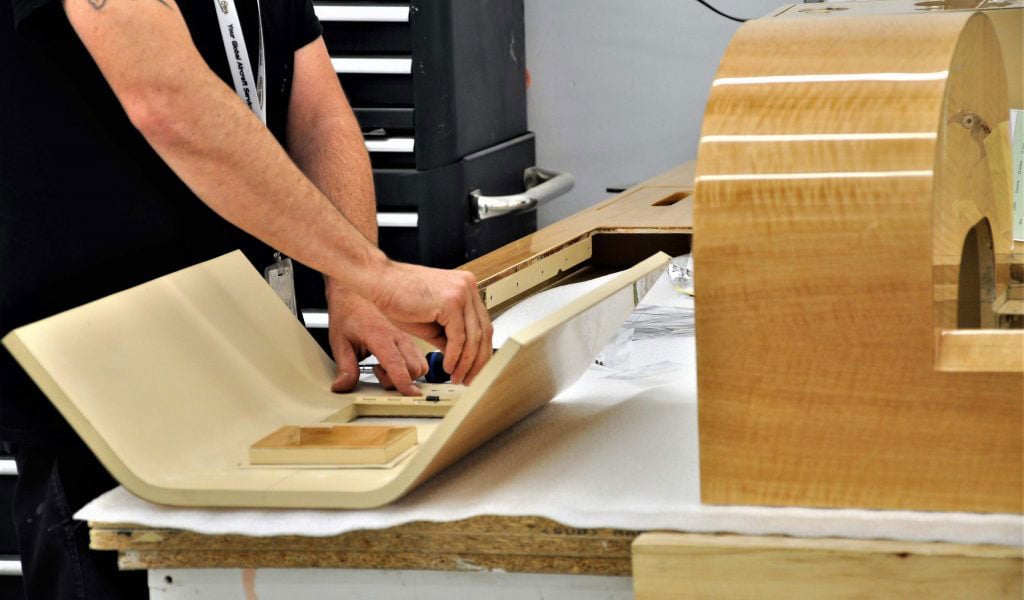
Currently, Flying Colours is performing a fleet refresh on Flexjet’s Gulfstream G650s involving both interiors work and new paint.
Jet Aviation, which in December 2022 unveiled plans to increase refurbishment capabilities at its Dubai DXB location in the UAE, in May announced delivering the first complete refurbishment from the facility performed on a Gulfstream G450. The project included hard and soft furnishings and a design refresh. The reworked veneer flaunts a high-gloss “piano black” finish, complemented by the upholstery’s palette of sleek grey. A second jet is meanwhile in the final stage of refurbishment at the facility.
The Middle East is “a key strategic hub in our network,” Jet Aviation senior v-p regional operations EMEA Jeremie Caillet said, noting that in addition to full cabin refurbishments, the DXB facility can perform avionics modifications and upgrades, including high-speed internet.
AMAC also reported high demand for refurbishments on large-cabin Gulfstream and Bombardier business jets in Basel, performed at its recently built large-cabin MRO facility, Hangar 5.
A “Factory Certified” Refurb
Bombardier has introduced the “factory-certified” appellation to the preowned market, offering refurbished jets through its Certified Pre-Owned (CPO) program. Bombardier selects the best aircraft it takes in trade and finds on the market for the refurbs, providing them with fresh paint, upgraded avionics and connectivity systems, and a one-year manufacturer’s warranty.
One recent example, a 2008 Challenger 605, had its cabin, lavatory, and galley updated to reflect “the design trends popular among today’s new aircraft buyers,” said director of preowned aircraft acquisition and sales support Thomas Fissellier. The cabin connectivity system was upgraded to a high-speed Collins Aerospace Ka-band system and the flight deck to a Collins Pro Line 21 Advanced avionics suite.
Since program launch in 2021, about a dozen Bombardier CPO jets have been sold. “As an OEM, we see an amazing opportunity to protect the residual value of our fleet,” said Fissellier.
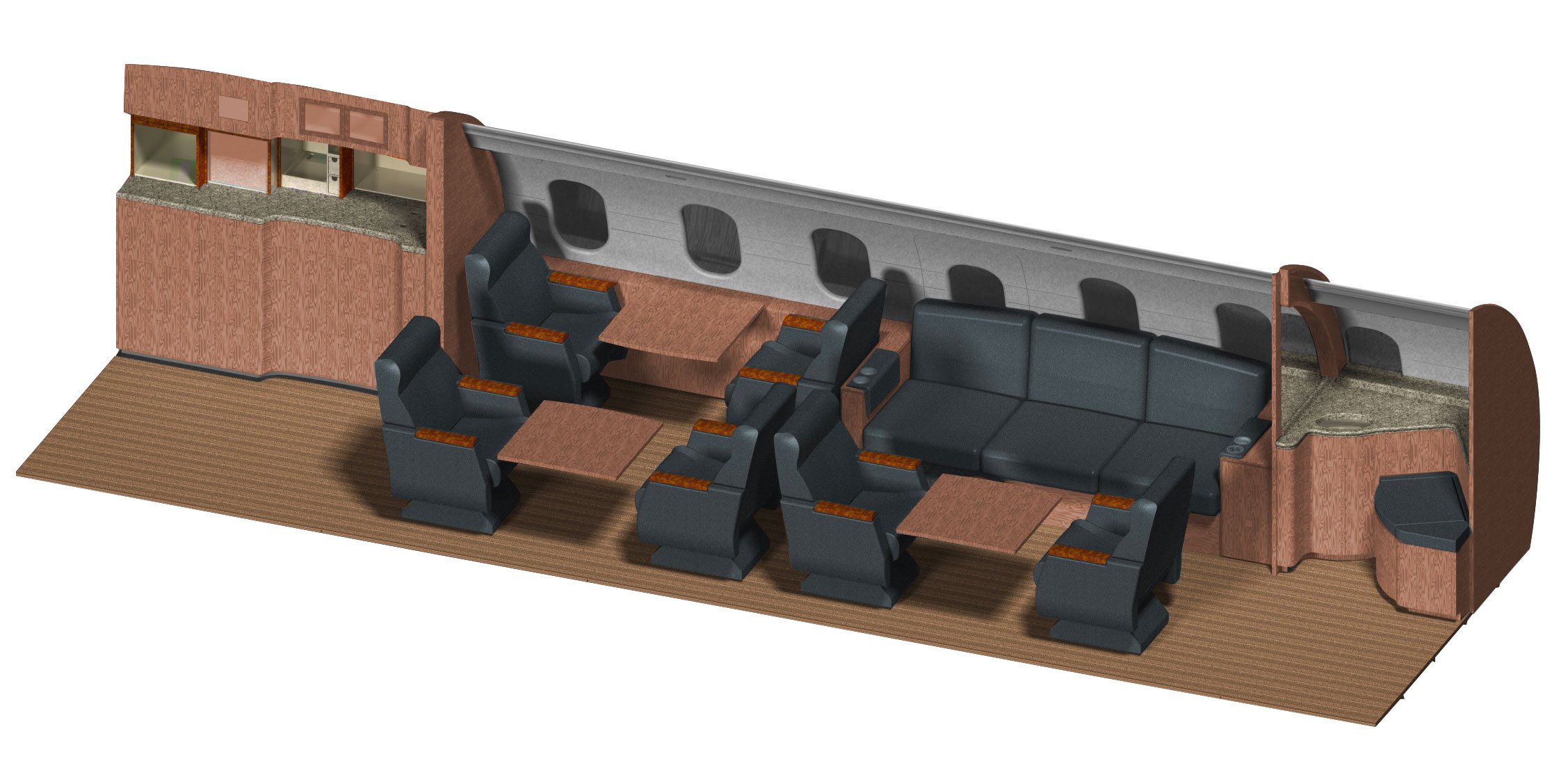
Cabin Tech
The amalgamation of Viasat and Inmarsat, the coming LEO era via Starlink and OneWeb, growing air-to-ground options from Gogo and SmartSky, and an insatiable appetite for data are keeping a spotlight on connectivity.
“A lot of the buyers are trying to understand all the [connectivity] options—When are they going to be available, which ones are working now, and which is going to be better,” said Nate Klenke, sales manager of modifications at Duncan. “That is creating some delay in decisions.”
Flying Colours’ Gillespie said connectivity “is a part of every conversation we have,” adding that, “Customers demand connectivity throughout the aircraft, along with the requisite charging, connections, and device stowage areas.”
Redundancy is trending. “We see more and more aircraft having dual connectivity systems installed to ensure consistent connectivity,” Gillespie said.
With connectivity established, “The focus is on exciting new cutting-edge IFE/CMS functionality systems that pair elegantly with redesigned cabins, and provide all the comforts and features VIPs enjoy in their residences,” said Boyle at Citadel. “It’s a very personal touch for the family and friends to experience high-class comfort and functionality with a nice blend of style and sophistication in open spaces.”
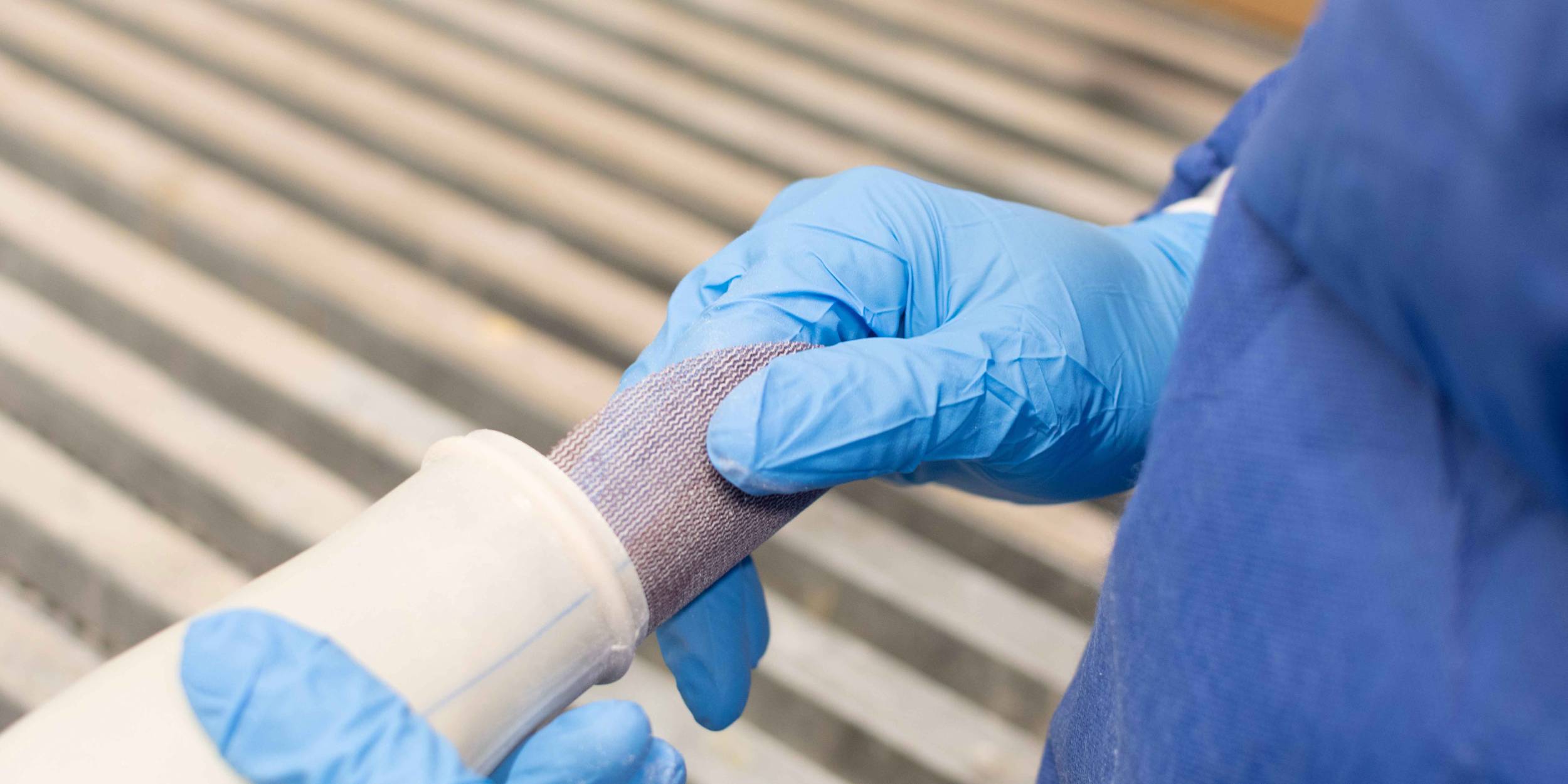
Per its pledge to “provide customers with more sustainable choices throughout the completion process,” Jet Aviation is using a bio-based resin to bond composite parts for two current head-of-state completion projects. Comprised of up to 25 percent locally sourced plant origin material, the bio-resin, developed in-house, has less environmental impact than epoxy resin, saves weight, and scored exceptionally well in flammability testing, said v-p of completions, Christoph Fondalinski.
King Air interiors specialist Aviation Fabricators has introduced the Monarch sidewall kit for 300-series King Airs, upgrading the twin turboprop’s interiors to factory-new King Air 360 standards. It includes the Royal Side Ledge system, Regal window shades, and Crown headliner, creating a more modern-looking cabin, said G.R. Lowe III, founder and president of the Clinton, Missouri firm.
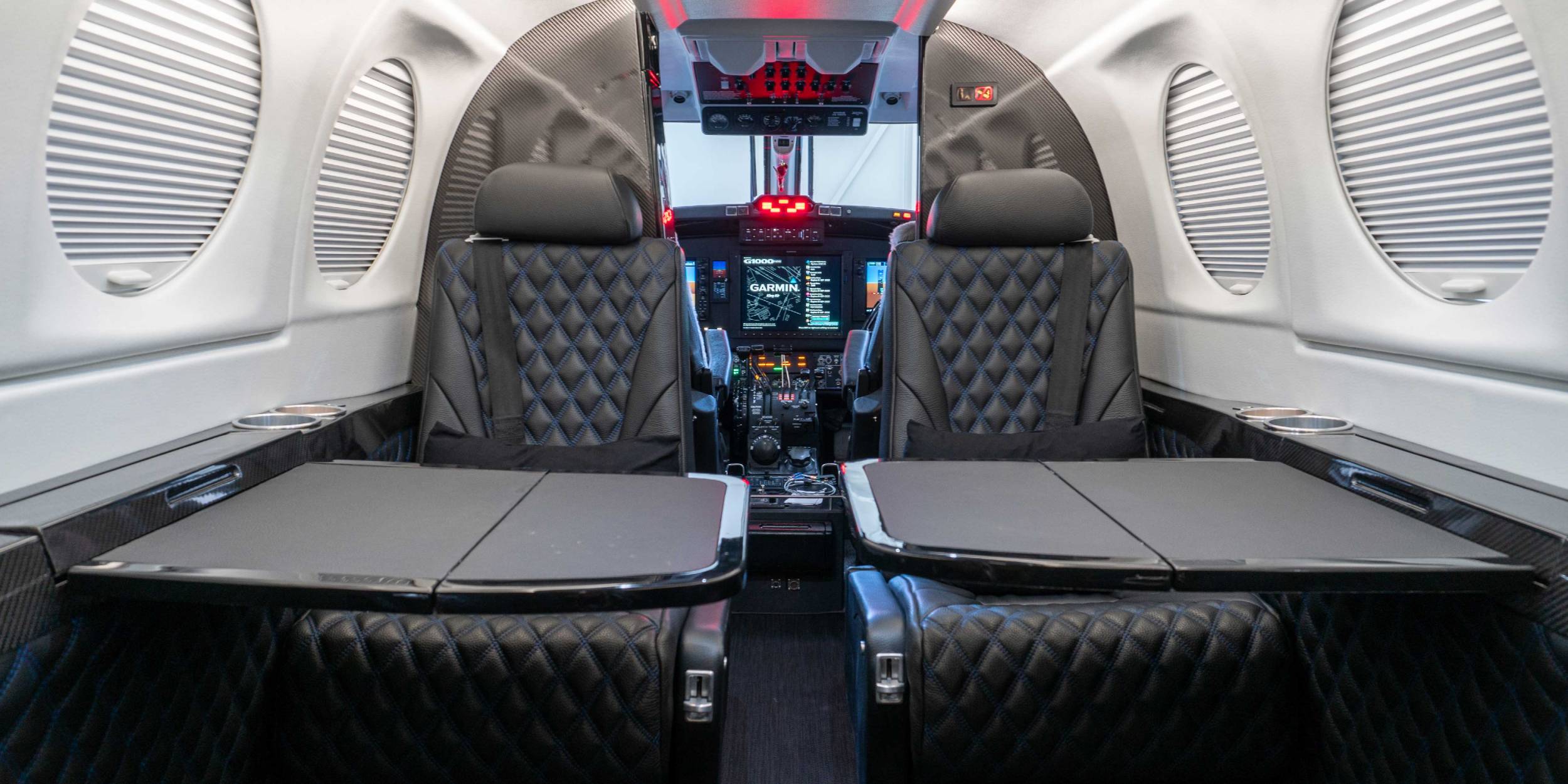
Airhawke, a Canadian engineering and cabin design firm that supports completions and refurbishment projects, is adapting augmented reality technology to improve the completion process. Virtual reality is already used in the industry to visualize imaginary objects—a divan or complete interior, for example—in space, noted CEO David Vanderzwaag. But augmented reality overlays virtual reality atop the physical space, “So you see both at the same time.” That enables designers and engineers to “walk into the green airplane, put on Microsoft HoloLens glasses, and see in situ where elements are going to sit and how they’re going to interface with the rest of that structure,” he said. Airhawke has developed the needed tools.
“We’re going to eliminate fitment errors via having the tool available during the design development process,” he said.